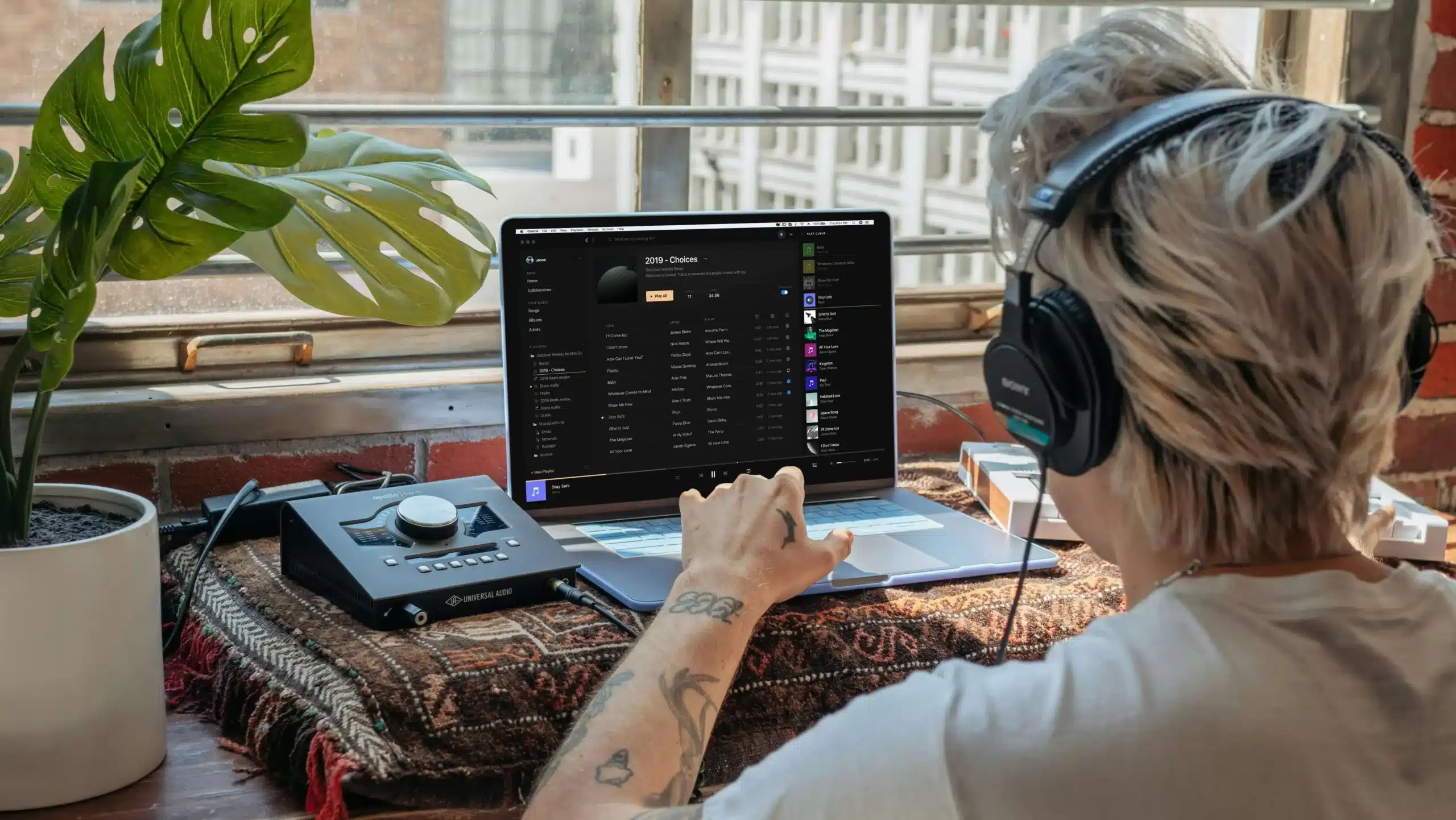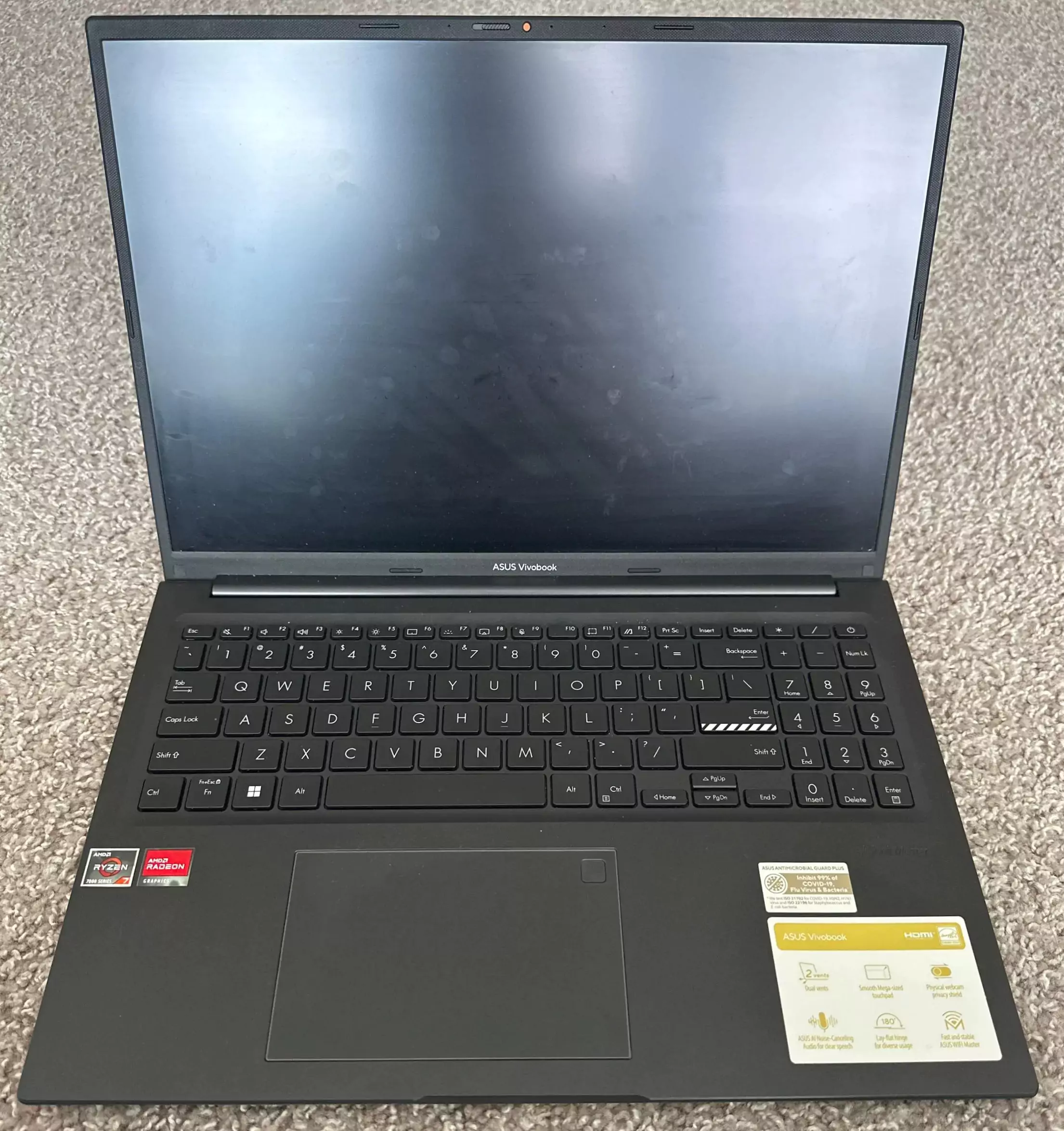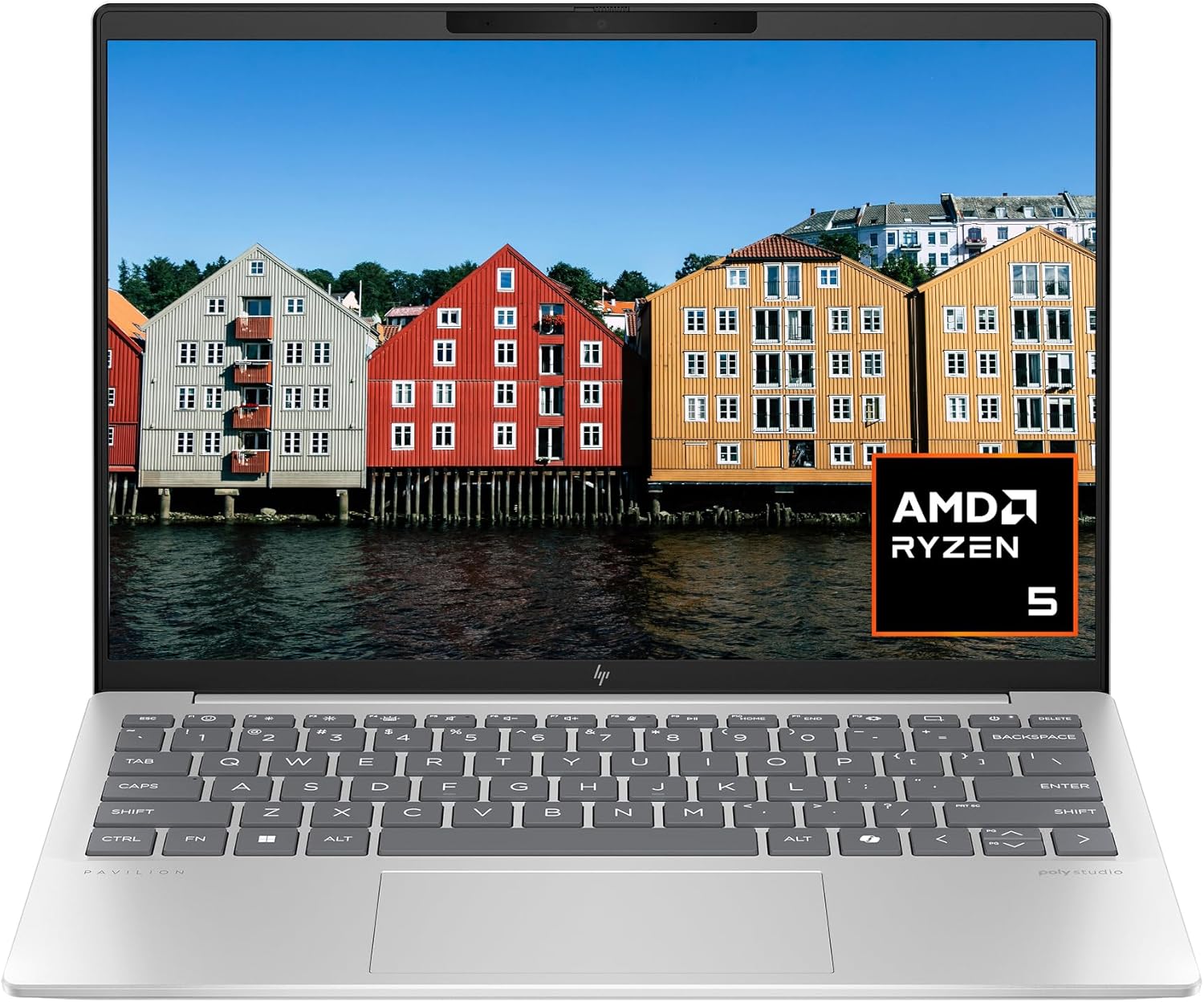
Calling all music producers, DJs, and audio enthusiasts! When it comes to creating, mixing, and recording tracks, your laptop is more than just a tool—it’s the heart of your production setup. From managing complex software to handling dozens of plugins, your machine needs to be a reliable powerhouse that can handle it all without breaking a sweat. Whether you’re crafting beats in your home studio or mixing tracks on the go, finding the right laptop can make or break your workflow.
That’s why our team has curated this comprehensive guide to help you navigate through the best laptops for music production in 2024. We’ve tested everything—from lightweight portable models that fit your mobile setup to budget-friendly powerhouses capable of handling pro-level audio sessions. Whether you’re a die-hard Mac user or prefer a powerful Windows machine, we’ve got the right recommendations for your creative process.
Our expert team tested over 100 laptops, comparing their performance, display quality, fan noise, battery life, and more to bring you the absolute best picks for any level of music production. Get ready to find the perfect laptop to take your music production to the next level!
Best Laptops For Music Production in 2024: Tested & Certified:
✅ We have tested over 1100 laptops since 2013.
✅ Our 3 hardware experts have more than 11 years of experience in hardware.
✅ We have spent over 21,315 hours testing laptops.
Our team of experts uses each laptop as an end consumer would, simulating real-world scenarios to give you an authentic, comprehensive review. We focus on rigorous, hands-on testing to ensure our recommendations are both reliable and trustworthy, Read More.
Apple MacBook Pro 14-inch (M3, 2023)
Specifications:
| SPEC | |
|---|---|
| CPU | Apple M3 Chip |
| Graphics | Integrated 10-core GPU |
| RAM | 8GB Unified Memory |
| Display | 14.2-inch (3024×1964) Liquid Retina XDR display |
| Storage | 512GB SSD |
| Tested Battery Life | 22 hours of battery life |
| Ports | 1x MagSafe (charging port), 3x Thunderbolt 4, 1x SDXC card slot, 1x HDMI, and a 3.5mm headphone jack |
| Weight | 3.4 Pounds (1.55 kg) |
The Apple MacBook Pro 14-inch (M3, 2024) is today’s star, packing a punch with its phenomenal features. The M3 chip offers stellar performance, making it overkill not just for heavy music production but for any workload you throw at it. The gorgeous XDR display with vivid colors is perfect for fine-tuning sound waves and visual plugins—giving music producers the precision they need. Connectivity is excellent with MagSafe, Thunderbolt 4 ports, an HDMI, SDXC card slot, and a 3.5mm headphone jack. This variety allows producers to connect essential peripherals like MIDI controllers, external audio interfaces, and even external displays seamlessly, creating a smooth studio setup. The speakers are exceptional, providing clear and deep sound, ideal for when you’re producing or reviewing tracks without headphones.
Thermal performance is top-notch, with quiet fans that ensure no noise interrupts your recording sessions. The 22-hour battery life is incredible, especially for traveling producers or those working on the go—no more need for a charger. Even with all these features, the laptop remains lightweight and portable, making it a perfect companion for producers who need power in a sleek package.
However, soldered RAM and storage limit future upgrades, which can be a downside for those seeking long-term flexibility. The keyboard’s short key travel might cause fatigue during extended use, especially for those typing for hours. That said, compared to last year’s model, the MacBook Pro brings improved battery life and enhanced thermals, but the lack of upgrade options remains a drawback. Overall, if you’re looking for a portable, high-performance machine for music production, this MacBook is a top contender—though, keep in mind that Apple’s 14-inch Pro comes in a premium budget category. If you are okay with the price, then look no further than it.
ASUS Vivobook 16-inch M1605 (2023)
Specifications:
| SPEC | |
|---|---|
| CPU | AMD Ryzen 7 7730U |
| Graphics | AMD Radeon Graphics |
| RAM | 8GB DDR4 RAM |
| Display | 16-inch (1920×1200) 60Hz IPS Display |
| Storage | 1TB M.NVMe SSD |
| Tested Battery Life | 6 hours of battery life |
| Ports | 3x USB Type-A, 1x USB Type-C, HDMI 1.4, 1x 3.5mm headphone jack |
| Weight | 4.14 Pounds (1.87 Kg) |
The ASUS Vivobook 16-inch M1605 (2023) stands out in our testing, offering essential features in a budget-friendly package at just $559. Despite its lower price, it’s well-suited for beginner and intermediate music producers who don’t need high-end performance for their tasks. Powered by the AMD Ryzen 7 7730U and integrated AMD Radeon Graphics, it delivers moderate performance, handling most music production tasks like editing tracks and running basic plugins smoothly.
The 1080p IPS display offers decent clarity, suitable for general music production needs like editing waveforms and using visual plugins. While the build quality isn’t premium, it’s solid and sturdy enough to withstand daily use. The port selection is practical, giving music producers access to essential connections for peripherals like MIDI controllers and audio interfaces. What’s more, the thermals are well-managed, and the quiet fans ensure your sessions remain free from distracting noise.
At just 4 pounds, it’s sleek and portable, though the speakers are loud and clear but lack bass and even sound unnatural, and shorter battery life are drawback, especially for those who need a laptop for travel or longer work sessions. Overall, this laptop is perfect for budget-conscious music producers who work primarily in a stationary setup.
HP Pavilion Aero 13 (2024)
Specifications:
| SPEC | |
|---|---|
| CPU | AMD Ryzen 5 8640U |
| Graphics | AMD Radeon Graphics |
| RAM | 16GB LPDDR5x RAM |
| Display | 13.3-inch (1920×1200) 60Hz IPS Display |
| Storage | 512GB NVMe SSD |
| Tested Battery Life | 8 hours of battery life |
| Ports | 2x USB Type-C, 2x USB Type-A, 1x DisplayPort 1.4, 1x HDMI 2.1, 1x headphone/microphone combo |
| Weight | 2.1 Pounds (1 kg) |
The HP Pavilion Aero 13 (2024) stands out in the Windows category, packing impressive features in a lightweight, portable design. Powered by the AMD Ryzen 5 8640U, the snappy performance makes it ideal for music producers editing multiple tracks or running plugins without lag, keeping the creative flow uninterrupted. The WUXGA display offers great clarity, perfect for fine-tuning waveforms and using visual plugins, giving producers the precision they need in real-time.
With a variety of ports like USB Type-C, HDMI, and USB Type-A, this laptop easily connects to essential peripherals like MIDI controllers and audio interfaces, making it a smooth fit for any studio setup. The 8-hour battery life, while not the longest, is impressive for portable sessions on the go. The thermals are well-managed, and the quiet fans ensure noise-free recording environments, which is a bonus for producers who need silence during recording.
However on the downsides, the speakers lack bass and may not be suitable for critical audio work, and without Thunderbolt 4, connectivity options are slightly limited. Overall, it’s perfect for music producers looking for a lightweight, high-performing laptop that offers great visuals and essential connectivity all in a sleek portable package.
FAQ’s (Frequently Asked Questions):
What should I consider when purchasing a laptop for music production?
When purchasing a laptop for music production, focus on a powerful CPU (at least four cores) and 16GB of RAM to handle multiple tracks and plugins. Ensure you have a large storage drive (SSD) for audio files. Look for multiple ports to connect essential equipment like MIDI controllers and audio interfaces. Quiet fans are important to avoid background noise during recording and consider battery life if you’ll be working on the go. Finally, choose a display size that fits your workflow, especially if you work without an external monitor.
Is MacOS better than Windows?
What is better macOS or Windows depends largely on your personal preferences and specific needs. Both operating systems have their strengths and weaknesses and cater to different aspects of the music production process.
| MacOS | Windows |
| Stability and Optimization: macOS is known for its stability and Apple software is highly optimized so that it performs better than Windows. | Flexibility and Customization: Windows laptops offer a wide range of hardware options and configurations, allowing you to choose a system that best fits your performance and budget needs. |
| Performance: Apple M lineup of chips provides great performance and they are battery efficient compared to Windows laptops. | Software Variety: While macOS has exclusive software, Windows supports a broader range of DAWs and plugins, offering more choices to users. |
| Software Compatibility: Many industry-standard music production software and plugins, such as Logic Pro, are exclusive to macOS. | Upgradability: Many Windows laptops allow hardware upgrades, such as adding more RAM or storage, which makes it more future-proof compared to Mac. |
| User Experience: The macOS interface is simple and easy to use and learn. | Cost: Generally, Windows laptops can be more cost-effective, providing similar performance at a lower price point compared to Apple products. |
Both options are great; the better choice depends on which features you prioritize.
Buying Guide For Best Laptops For Music Production:
When choosing a laptop for music production, the processor is a crucial component. Opt for a multi-core CPU like the Intel i7 or AMD Ryzen 7, as these are capable of handling multiple tracks, plugins, and virtual instruments without slowing down.
RAM is another key factor. To manage large projects and run multiple apps smoothly, you’ll want at least 16GB of RAM. This ensures your workflow stays uninterrupted, even when working on complex compositions with many layers.
For storage, an SSD with at least 512GB is essential. SSDs offer faster load times, allowing you to access your audio files quickly. If you’re working with larger libraries, consider adding an external SSD for extra storage space.
When it comes to connectivity, having the right ports is important for music producers. Look for laptops that include USB-C, Thunderbolt, and USB-A ports so you can easily connect MIDI controllers, audio interfaces, and external drives, which are essential for a seamless studio setup.
A quiet cooling system is vital for recording environments, as loud fans can interfere with sound quality. Laptops with efficient thermals and quiet fans will ensure noise-free recording and better performance during heavy workloads.
Lastly, if you’re a producer who works on the go, portability and battery life are important. Look for lightweight laptops with at least 8 hours of battery life, so you can produce music without constantly needing a charger.
How We Test The Best Laptops For Music Production:
At GreatTech, we don’t just rely on benchmarks—we test laptops the way music producers use them. With over a decade of experience and thousands of hours spent testing, our process ensures that every recommendation is based on real-world performance.
We run demanding DAWs like Logic Pro, FL Studio, and Ableton Live to evaluate how well each laptop handles multitrack sessions, plugins, and MIDI instruments. We push the CPU and RAM to their limits by loading multiple tracks and virtual instruments to see how smoothly the laptop runs under heavy production workloads.
Portability is key for music producers who need to work on the go, so we assess each laptop’s weight and battery life by simulating real-world use, including editing, recording, and live playback. We also check connectivity, ensuring there are enough ports for essential peripherals like audio interfaces and MIDI controllers.
Our process also evaluates fan noise, ensuring quiet operation during recording, and display and speaker quality, making sure you get accurate sound and visuals during production. Thorough this testing we ensure each laptop we recommend can handle the unique demands of music production. Read More.
Conclusion:
- Phenomenal performance
- Gorgeous display with vivid colors
- Amazing Battery Life
- Good thermals and Quiet fans
- Excellent speakers
- Varitey of ports
- Soldered RAM and Storage
- Short key travel can cause fatigue














